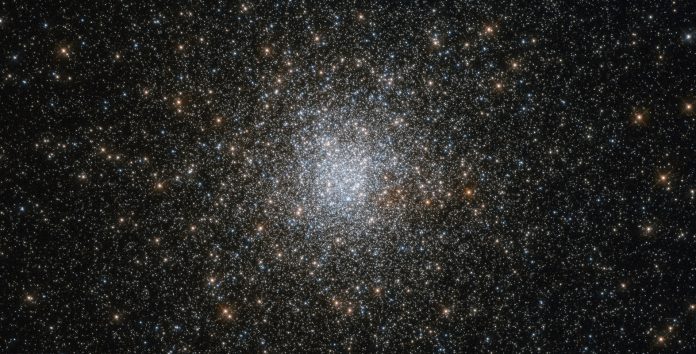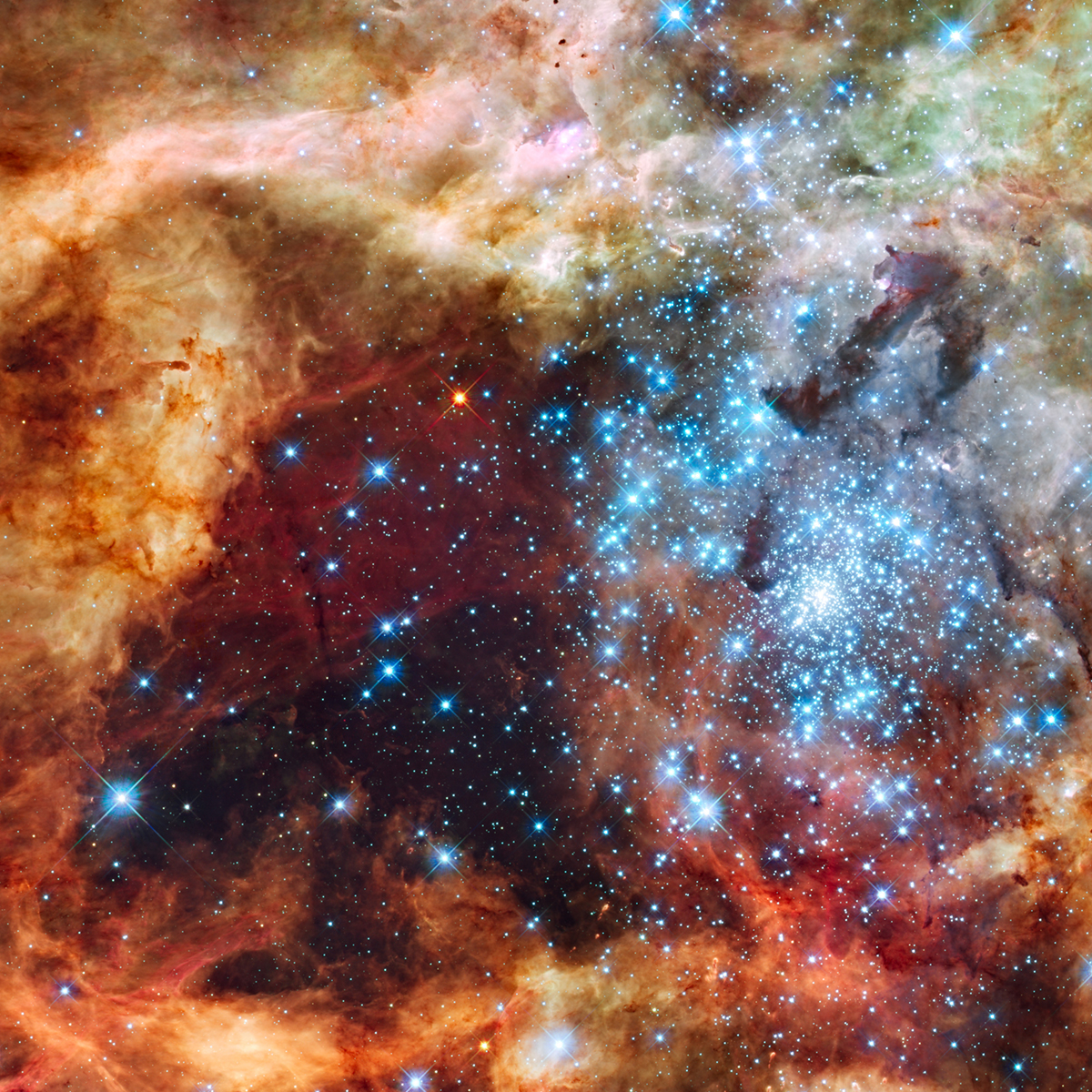
Nate Bastian, Professor of Astrophysics at Liverpool John Moores University draws our attention to stellar clusters, a fascinating aspect of research into the Universe
Stellar clusters, groupings of stars held together by their own gravity, have a long history of being used to study a variety of astrophysical phenomena. Clusters are attractive probes of galaxy formation and stellar evolution as they are traditionally thought to be relatively simple systems, i.e., all the stars within a cluster have the same age and chemical composition (within some small tolerance).
Many clusters survive to extremely old ages, bearing the imprint of their formation for billions of years. Hence, clusters can be used as either benchmarks or signposts, yet our understanding of these deceptively simple systems continues to advance in leaps and bounds.
The traditional view of stellar clusters is that there are two distinct types. Open clusters are relatively young (between being newly born and a few billion years old) objects that belong predominantly to the disc of the Milky Way. These tend to be low mass, low-density objects, usually with just a few hundred or thousand stellar members.
Globular clusters (GCs), on the other hand, are ancient objects (ages greater than ten billion years) with extreme masses and stellar densities, containing hundreds of thousands to millions of stars. These tend to be associated with the bulge or the halo of the Galaxy.
However, our notion of stellar clusters, their formation and their fate, has undergone a radical change in the past two decades. In recent years, it has become clear that globular clusters, once thought to only have been able to form in the special conditions of the early Universe, are still forming today. These extreme objects, known as Young Massive Clusters (YMCs), were originally discovered by the Hubble Space Telescope in galaxy mergers undergoing huge bursts of star-formation. They have now been found in nearly all star-forming environments and appear to be scaled up versions of the open clusters known in the Galaxy. In fact, even within our own galaxy, we have begun discovering clusters with GC-like masses, but with extremely young ages (less than a few million years old).
This discovery has opened an entirely new window into GC formation and their evolution. The ancient GCs formed early in the Universe, meaning that the early stages of their lives are extremely difficult to study in detail, even with the most powerful telescopes available today. However, due to their proximity (in nearby galaxies), YMCs can be studied in exquisite detail and we can take what we learn from them and apply it to the ancient GCs.
While the process of cluster formation takes millions of years, we can build up large samples of clusters in nearly every stage of their birth, from starless dense cores of gas/dust within giant molecular clouds, to a collection of young stars still embedded within the larger gas cloud and finally to a fully exposed stellar cluster made up of stars that have destroyed the parental gas cloud through their extreme feedback from winds, ionising photons and supernovae.

With this kind of sample in hand, we can start addressing fundamental questions such as: Why do some galaxies form very massive clusters, while others do not? How do the properties of clusters relate to that of the host galaxy? Can we use GCs (both young and old) to trace the formation of their host galaxy? Have GCs undergone multiple epochs of star-formation within them, or are they truly the single-aged populations that we have always thought they were?
This last question is particularly relevant due to another recent discovery about globular clusters, namely that they appear to have multiple populations of stars within them, with each population having distinct chemical abundances. Some stars display the typical chemical patterns observed in field stars, i.e. stars that are not located in stellar clusters. However, in some GCs, we find that the majority of the stars have anomalous abundances, with a chemical pattern unique to massive clusters (i.e., enhanced in helium, nitrogen and sodium while being depleted in oxygen and carbon). These patterns are not found in stars outside clusters.
The origin of these multiple populations is still under debate and many models have been put forward. The details of the models differ between the authors, but what they have in common is that they all invoke multiple epochs of star-formation within each cluster, challenging our fundamental notions about stellar clusters.
But the YMCs offer a direct way to test the models. We can search for older clusters that are forming new stars or for those containing the large required amounts of gas needed to form further generations of stars. This has now been done and to the disappointment of the theorists, no such cases were found amongst the hundreds of young massive clusters surveyed. This means that clusters, even the most massive ones, are made up of stars of all the same age. This is a puzzling conclusion, as it means that the origin of the multiple populations is still entirely unknown.
However, YMCs themselves may lead us eventually to the answer, as abundance studies of the stars within them have delivered a further surprise. There is a strong trend between the age of the cluster and the degree of chemical abundance variations present, with older clusters having much larger spreads than younger clusters. What this exactly means is still uncertain, but it suggests that the multiple populations may have more to do with how the stars and clusters evolve rather than how they formed.
Sources of external funding: The Royal Society University Research Fellowship, and The European Research Council Grant (ERC-CoG-646928-Multi-Pop).
Please note: this is a commercial profile
Nate Bastian
Professor of Astrophysics
Liverpool John Moores University
Tel: +44 (0)151 231 2933










